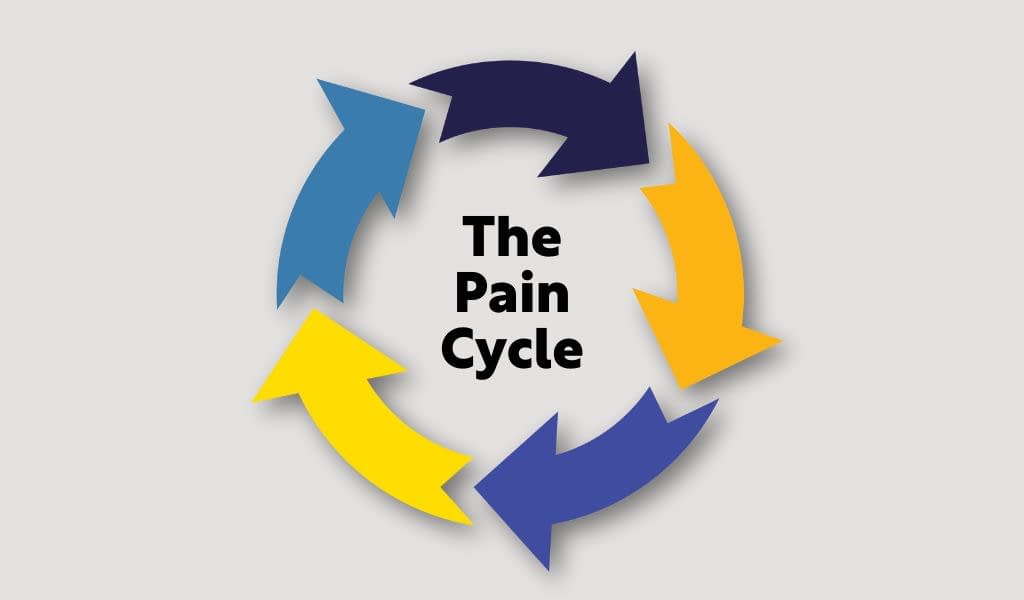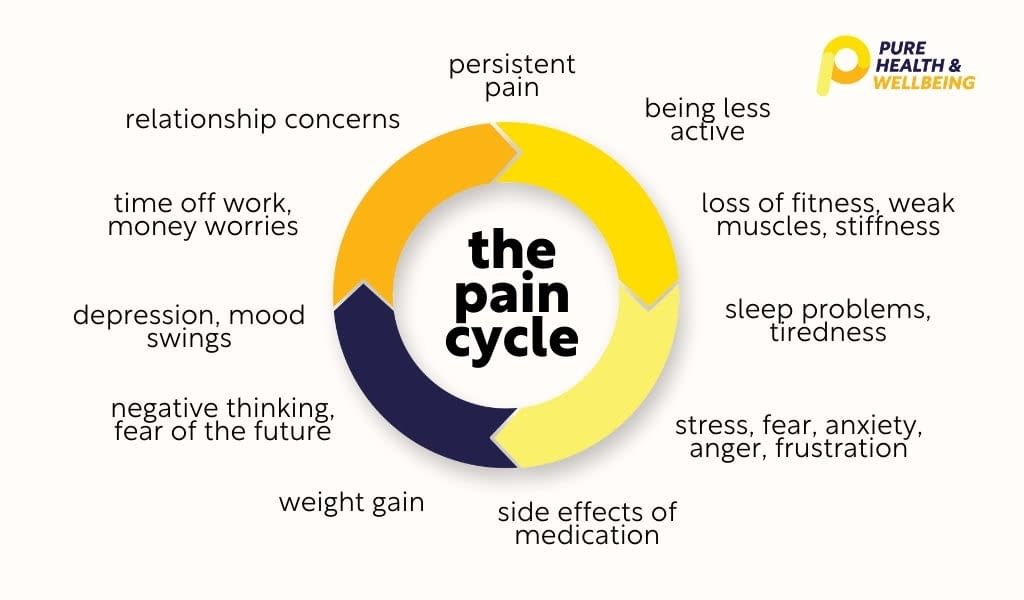When we have persistent pain, it can be devastating. We stop doing the things that trigger the pain, and that often means stopping doing the things we enjoy – our hobbies, our work, and spending time with friends. These things are crucial to our happiness and self-worth, so it’s common to become frustrated, anxious, or even depressed. Many people also struggle with guilt – guilt over not being able to keep up with housework, missing out on their children’s activities, or relying more on friends and family.
Everyone is different and this does not apply to everyone, but it is a common picture.
When we stop being active, it also affects our bodies. We can become weaker, and less able to manage daily tasks. Our joints may become stiff. We may put on weight. This leads to a cycle where our bodies become less capable, while our nervous system becomes increasingly sensitive to pain.
This can lead us into a very difficult place. People with persistent pain often feel hopeless – not always because of the pain itself, but because of the impact it has on their lives.
Growing the life box…
Sometimes, it can feel like pain consumes every last bit of energy you have, with no room to do what you enjoy. It often leads to a feeling of life shrinking and closing in on you.
You may not be able to get rid of the pain, but by paying attention what matters most to you and making room for these things around the pain, it can really help. This shifts the focus away from the pain to other things in life. We know ultimately this can help ‘reassure’ the overprotective brain that life is possible and worth living again, which can in turn de-escalate the pain over time.
Starting to build confidence, doing things we enjoy and becoming more capable further reassures our overprotective brain. The stronger and more capable we become, the less attention that our overprotective system will pay to minor signals. See seesaw diagram.
As our overprotective system becomes less sensitive, we’ll be able to do more. This creates a positive cycle—taking control and paving the way toward recovery.
A fascinating real-world example of the effect we can have on our pain comes from studies using a new form of MRI scan that examines the brains of people who meditate. Some monks are able to seemingly block out pain. One of the most famous stories is that of the “monk on fire”, who willingly set himself ablaze in a Vietnam protest, yet remained calm and composed.
The studies revealed that in people who meditate, areas within the brain that are central to pain processing and attention were significantly thicker than in those who don’t meditate. The researchers concluded that by training their mind through meditation, individuals could train their minds to change their pain pathways, influencing how they perceive and anticipate pain.
“It all begins and ends in your mind. What you give power to, has power over you” – Leon Brown
It is absolutely possible to break this cycle and regain control. You can reduce your symptoms, get back to doing the things you love, or even discover new passions.
We’ve worked with thousands of people with persistent pain. People who have been completely hopeless and at rock bottom. **See our case studies** By guiding them through their recovery, helping them discover what works best for them, and supporting them in achieving their goals, we have helped them break the cycle, regain control, and return to doing the things they love.
It starts with understanding persistent pain, but that is only the beginning. You are at the start of an exciting journey of discovery and recovery, and we’re here to walk alongside you all the way.








